Although it’s hard to imagine, there was a time when root beer and ginger beer weren’t sugary sodas, but healthful probiotic brews. As recently as the early 1900s, it was common to ferment these very low alcohol “beers” (more along the lines of today’s kombucha) at home. If you’d like to experiment with making your own old-fashioned fermented sodas, the first thing you’ll need is a ginger bug recipe.
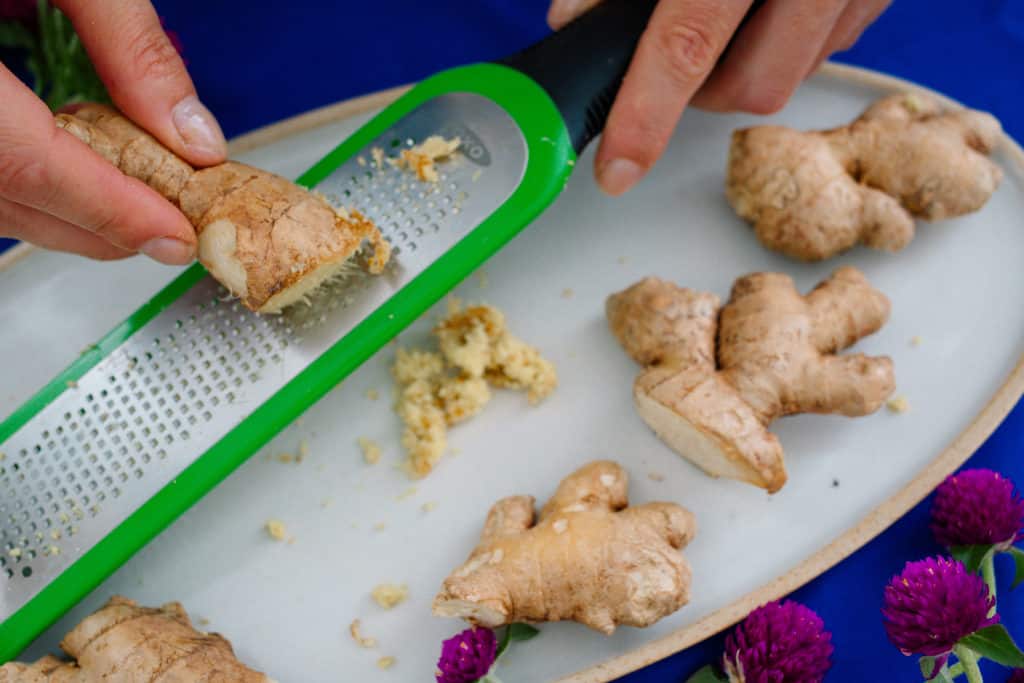
What’s a Ginger Bug?
A ginger bug is a live culture made with ginger root, sugar, and water. Because it uses a wild fermentation process, it’s one of the simplest ways to start a fermented beverage — you don’t need to track down a SCOBY or special wine or brewing yeast.
However, while the basic process is simple and the ingredients are readily available, nurturing a wild yeast culture is an art. It might take some practice, so don’t be discouraged if it takes a couple of tries to get your ginger bug going. That said, I certainly hope this ginger bug recipe sets you up for success!
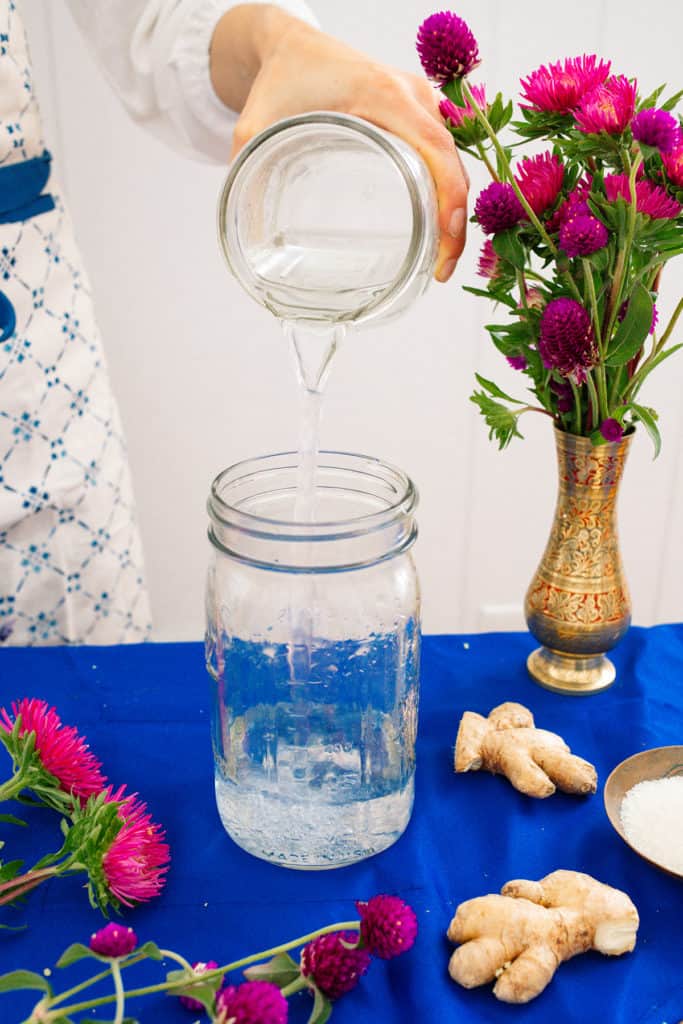
Why Brew Your Own?
I’ve written about the harmful ingredients in store-bought soda before, namely refined sugar and the unnamed chemicals in “artificial flavors.” Still, it’s worth a reminder that these ingredients contribute to the toxic load on our system, especially when consumed again and again over time. Our bodies are constantly working to repair damage from toxin exposures, but when they become overwhelmed, we start to see disease.
In contrast, fermented herbal drinks will benefit your health, helping your body do its innate healing work. First, there are the benefits of whatever herbs you use in the base tea — many herbs cleanse or tonify our internal systems, for instance. And because you’re making your starter culture using this ginger bug recipe, your brew will get a boost from ginger, including its anti-inflammatory and digestion-supporting properties.
“Rather than creating more work for our internal repair systems, drinking an old-fashioned brew supports the body in its regenerative process.”
Additional benefits come from the fermentation process, which increases the bioavailability of minerals in the base tea and produces probiotic bacteria for a healthy gut microbiome, as well as producing several B vitamins.
Rather than creating more work for our internal repair systems, drinking an old-fashioned brew supports the body in its regenerative process.
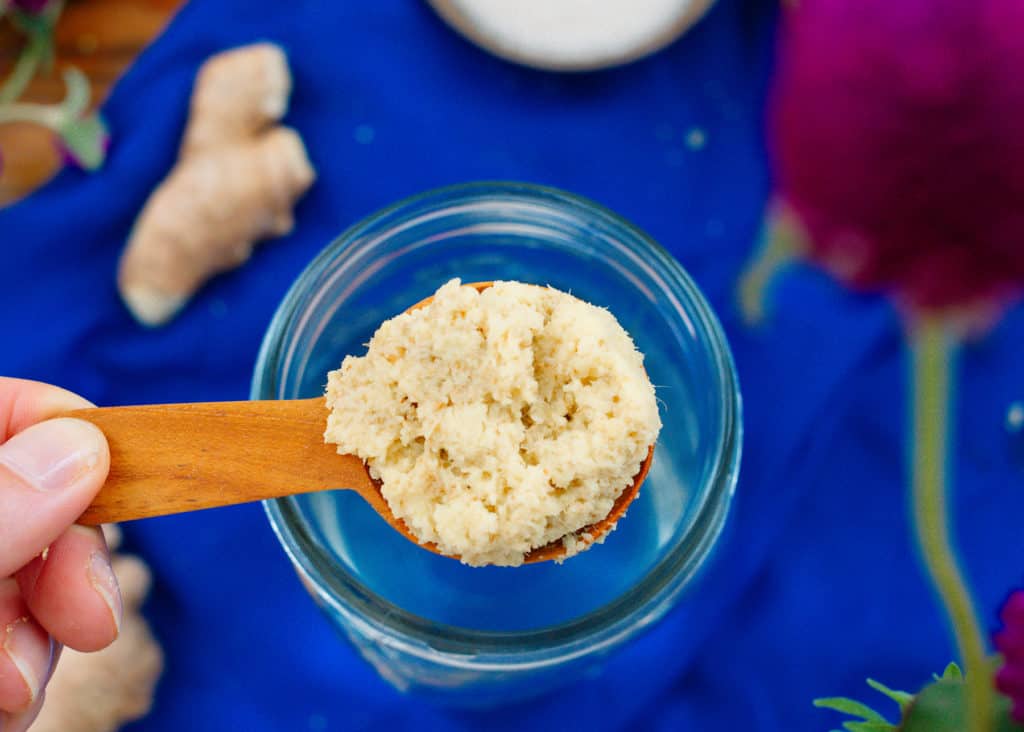
I mean really, why do we have that ice chest full of sugar and dye filled drinks at the party, picnic or family gathering? Not to mention the school and sports functions, those seem to be where we let down our guard and send the message to our kids, that group gatherings are the place to junk out. It’s like the drinks are an afterthought and it’s usually twice as expensive to find something at the store that is semi-acceptable to provide enough drinks for a large group of people.
We know the saying, you are what you eat.
Go ahead and add to that:
“You are what you drink”
Claim your drinks! It is so easy to make healthy drinks. Along with brewing your soda’s, my blog is full of easy to make, healthy party drinks! Here are a few: How to Make Homemade Ginger Ale and Refreshing Lavender Mint Lemonade Recipe.
Ginger Bug Recipe
Ingredients
- 2 cups filtered water
- 1/2 ounce organic cane sugar
- 1 ounce fresh ginger
Instructions
Start Your Ginger Bug
- Combine the ingredients in a quart-sized glass jar.
- Cap with a lid or a piece of cheesecloth, and let sit overnight in a warm location
Nurture Your Ginger Bug
- Each day for the next 4-6 days, add: 1 tbsp. grated ginger + 1 tsp sugar + a splash of filtered water
- Seal the jar.
- Within this timeframe, you should start to see bubbles forming. This means your ginger bug is ready!
Notes
How to Use Your Ginger Bug
When your ginger bug is ready, you can use it to ferment up to a gallon of sweetened herbal tea. You can follow a recipe like my old-fashioned root beer recipe, or improvise your own homemade probiotic drink.
How to Use Your Ginger Bug
Instructions
- Boil 8 cups of water.
- Add your choice of herbs. When calculating amounts, keep in mind this recipe makes 16 cups total.
- Add 1½ cups of sugar to your herbal tea base. The sugar is essential to the fermentation process – it’s food for the yeast – so it’s important to include it.
- Boil for 15 minutes, then remove from heat.
- Strain your ginger bug.
- Once the tea has cooled completely, add your strained ginger bug to the tea.
- Add enough water to make 1 gallon (about 8 more cups).
- Bottle in flip-top sealable bottles.
- Leave to ferment for about two weeks. It’s done when it’s fizzy and carbonated after you flip the top. Transfer the bottles to your fridge to slow the fermentation process (and prevent them from exploding!) once you reach your desired level of fizziness.
- It is important to “burp” or open your bottles to release the fizziness.
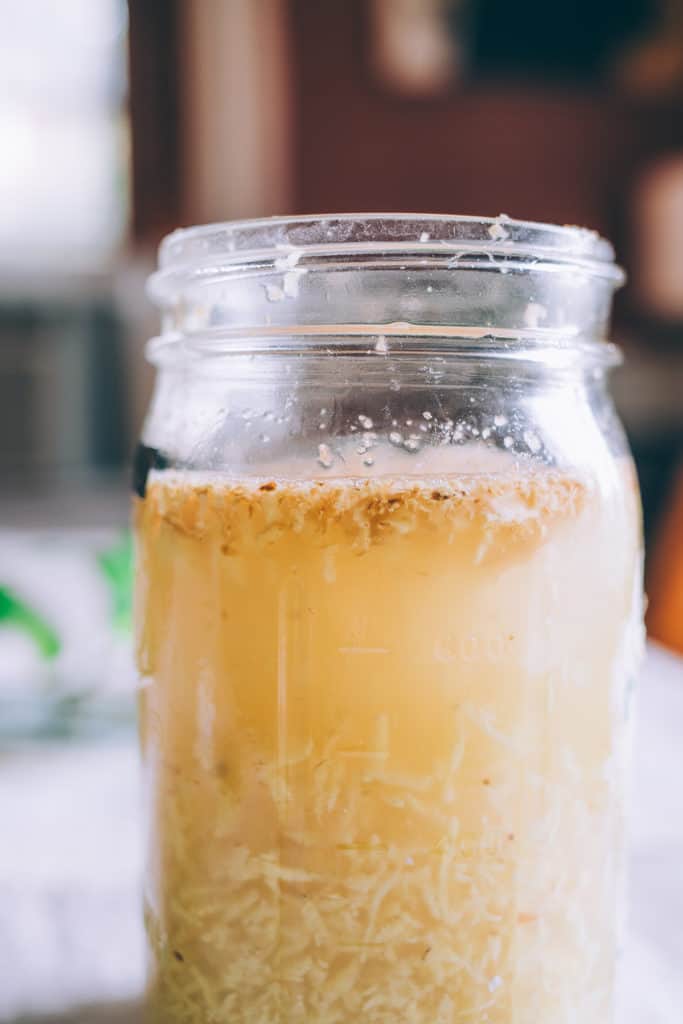
A Bug You’ll Want to Share
Once you’re comfortable brewing old-fashioned soda, try sharing with family and friends at a gathering. One of my favorite ways to share herbalism is with tasty drinks because not only are they a great alternative to sugary sodas and drink mixes, but they help dispel the idea that herbalism is disconnected from daily life or too complicated to learn. The opposite is true.
Herbalism is meant to be woven into every meal, and, as with this ginger bug recipe, learning a new technique can feel enchanting. With it, we’re tapping into an ancient wisdom that empowers us to care for our bodies while bringing us into closer connection with the Earth from which we are woven.
Join me in the kitchen? In my online class, My Herbal Kitchen, you’ll get step-by-step guidance and videos revealing practical ways to support your family’s health with medicinal drinks and meals, even if you’re short on time or dealing with the pickiest of eaters.
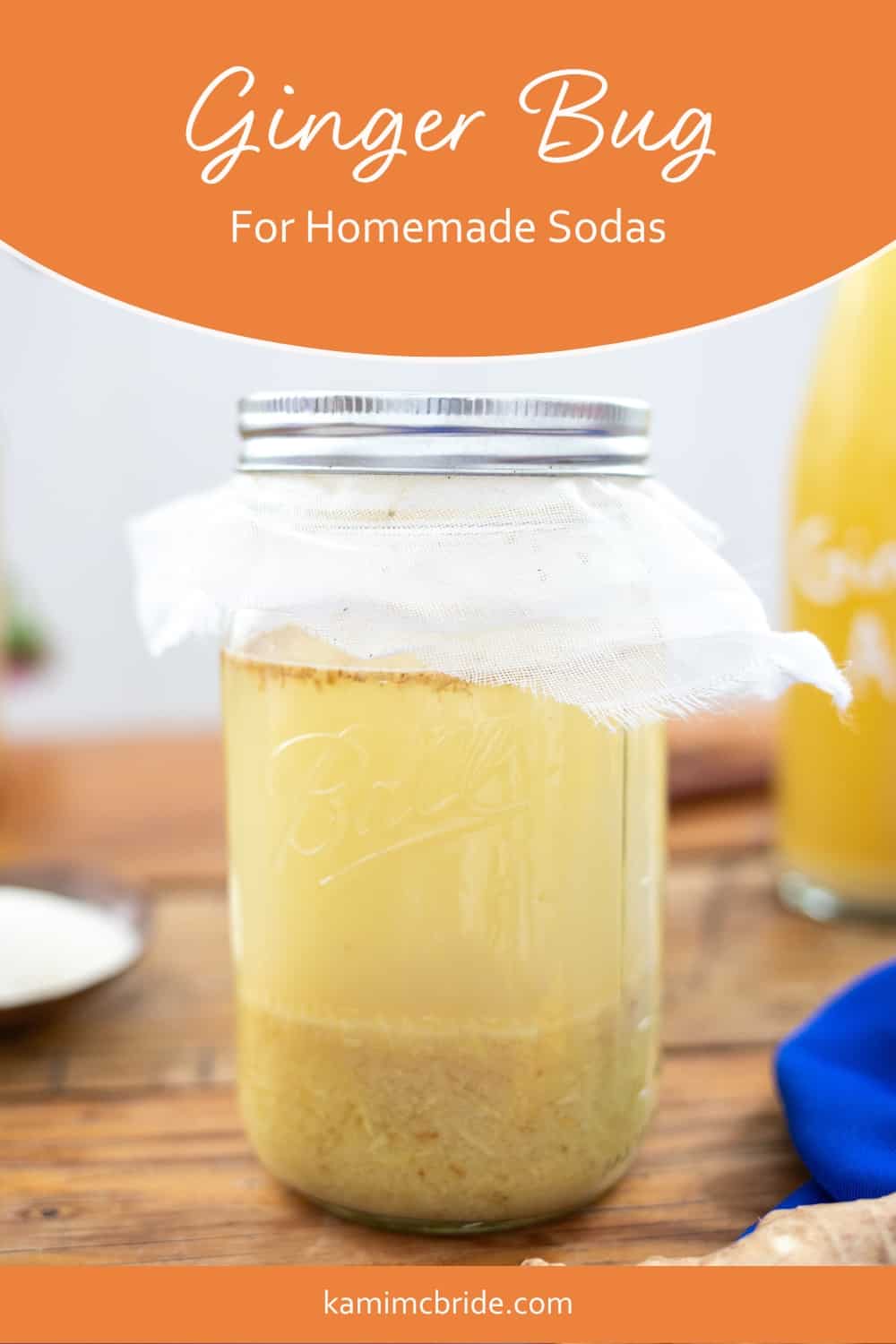

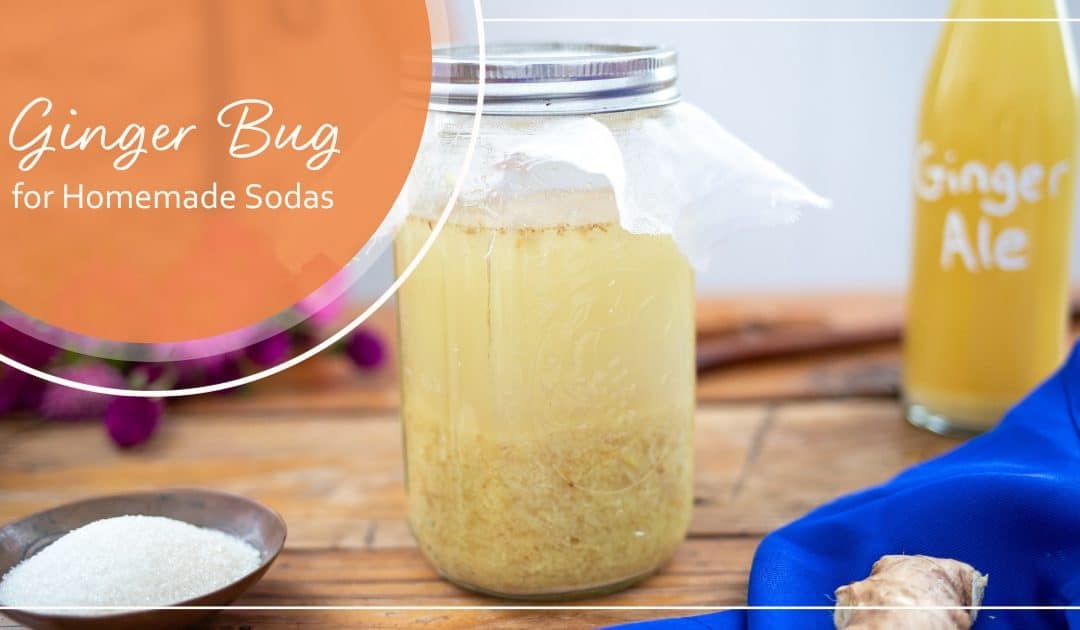
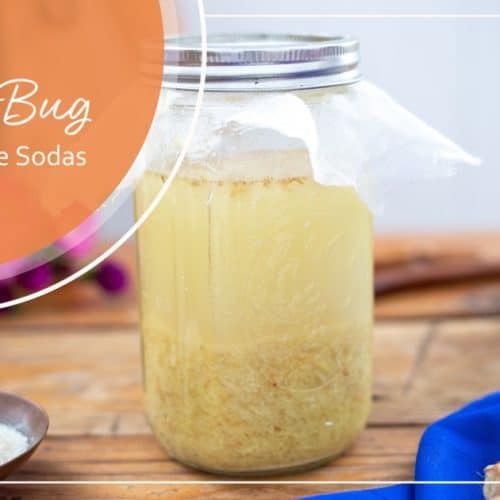
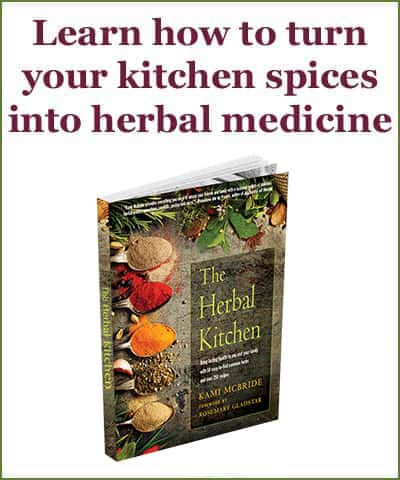


Hi Kami
I will have to try this recipe. Our temperature in Australia is 32 degrees Celcius so might be around your 95 in F. not sure but it’s hot and sometimes humid. We will be looking for cool drinks Christmas Day but this will not be ready by then, have to be for New Year.
Thanks for all your wonderful recipes over the year, I have greatly appreciated them.
Happy Christmas and New Year.
Maggie